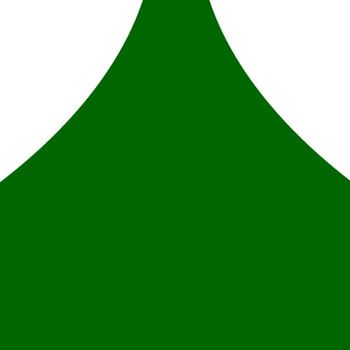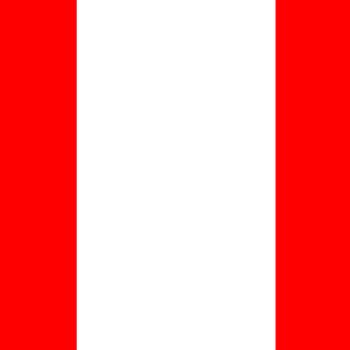Goldfield Jack, Chin Kit stamp their mark on Bendigo footy

There have been many important players down the years in Bendigo football but one who rates very highly is Russell Goldfield Jack.
And no, I’m not landing Russell with an improvised journalist’s name --- that was the middle name his mother christened him back in 1935.
He was the son of a Hong Kong Chinese father and a Chinese-Australian mother.
In footy his first leadership position was as captain of the Long Gully Primary School football side.
He honed his skills for hours when school had ended for the day by booting the footy from one end of a vacant block of land across from his school to the other.
And he remembers that although he was clearly a Chinese boy he received almost no racism comments in the schoolyard.
“Footy and the other sports we played cut across a lot of the barriers for me,” he recalls.
Russell’s daughter Anita said that old timers in Bendigo and suburbs called Goldfield the ‘Cazaly of Bendigo’, a reference to the famous Roy Cazaly who was the outstanding South Melbourne forward of that era.
The Swans full-forward who pulled in amazing high marks despite his small-ish stature inspired Mike Brady’s 1979 cult song ‘Up There Cazaly’.
“I don’t want to sound big-headed, but high marking came quite easily to me,” Russell recalled.
Then as he progressed to double figures Russell went out to Canterbury Park on the tram and watched Eaglehawk in the BFL.
He was staggered by the size of the crowds and also by how seriously one-eyed fans, as well as the players, took the game.
One of the Hawks’ players he kept a special eye out for was Ian ‘Snowy’ Chinn who had returned to the BFL after playing two seasons in the VFL before World War 2 intervened.
Snowy kicked 28 goals in 17 games for South Melbourne in 1940 and 1942 because, just as in World War 1, senior VFL (now AFL) footy didn’t completely shut down as all regional and country football had done during both world wars.
Then in 1946 not long after he’d been discharged from the Army Snowy played a key role in Eaglehawk’s 1946 premiership. The Two Blues defeated Golden Square by four points: 14.10 (94) to 13.12 (90).
Goldfield Jack remembers Snowy Chinn well.
“I can recall Ian Chinn playing for Eaglehawk. He had all the skills and a big kick,” Jack remembers.
“We knew he had a Chinese background which was exciting.”
By 1949 Russell Jack had been selected for the Bendigo regional schools team which travelled to Melbourne to participate in the Victorian Schoolboys Carnival.
And he had a huge few days. The tiny Chinese winger from Long Gully won the fairest and best player at the carnival ahead of future VFL legends.
The names here are significant: Collingwood premiership player and Hall of Famer Thorold Merrett and future Brownlow medallist and Carlton Team of the Century half-back flanker John James.
Upon returning to Bendigo Russell was promoted to Eaglehawk’s senior side at age 17.
Richmond was already keeping an eye on him and eventually Tigers’ president Maurie Fleming made the trip to central Victoria to try and woo Russell to join the Tigers in the Big Smoke.
But the Bendigo footy prodigy’s priority, however, was to earn enough money to help his family survive.
“What has to be remembered is that everybody in that era was poor.
“I was one of nine kids who were like hungry horses. So I had to tell Mr. Fleming that I was grateful for the offer, but I needed to stay home and help my Mum who was sick.
“Cooking, washing laundry by hand, managing the fire --- I did it all.”
Russell eventually retired from footy in 1953 at the tender age of just 18, but retains a philosophical outlook on the code.
“When I look back I think I would have made it in senior footy, but as a boy in a Chinese family I had obligations that went beyond sport.”
Now aged 88, Mr. Jack regaled the audience at the Bendigo launch of Patrick Skene’s new book in early December with his memories of local footy.
One footballer who should clearly be marked down in the annals of Bendigo footy history is Henry George Chin Kit.
He’s the first known sports person of Asian descent to play for a sporting club in Australia making his Bendigo debut as a 17-year-old in 1882 for Ironbark vs. Charing Cross.
Both clubs, of course, have long since wound up and passed into Bendigo football’s history annals.
Henry’s Bendigo-based footy career didn’t last very long and strangely enough even though his family moved to Aussie Rules footy territory in Launceston, Tasmania, Henry didn’t continue with his footy career.
Eventually the family anglicised the family name to Kitt as they assimilated into mainstream Tassie life and there’s plenty of Kitts here in Bendigo to this day.
Yan Cheong Wong Ying was a Cantonese immigrant who was the owner and publican of Dunolly’s Terminus Hotel.
His son William Ying, playing on the wing, won two premierships with Dunolly in 1903 and 1907.
He became a serious car collector and graduated into a senior motor mechanic. His garage in Alma Street, Maryborough, still stands to this day with the main sign reading “W.H. Ying Garage”.
And then there was Louey O’Hoy who came to Australia from Toishan and established a famed general store in Bendigo’s Bridge Street.
His great-grandson Trevor O’Hoy played reserve grade footy for St Kilda.
The Wee Hee family has a long and proud sporting history in Bendigo.
Ron Wee Hee, son of Percy, was a leading BFL player in the 1950s.
Known in the Bendigo Addy and locally as the ‘Fireman Footballer’, Ron played for Sandhurst and then went on to win two senior premierships with White Hills in the Bendigo Football Association.
He was part of one season’s summer trials with Collingwood before moving on to Brighton in the VFA where he racked up six senior games.
Ron’s three sons Grant, Rodney and Jeffrey all continued the Wee Hee family footy tradition with Grant taking out the Heathcote DFL fairest and best award in 1991 and also six club fairest and best medals with his father’s old club: White Hills.
Grant made this remark about his father’s legacy: “The Wee Hee name remains very strong in football circles.”
I remember covering many Bendigo Braves basketball games in the Nineties for the Addy when Rodney ‘Jai’ Wee Hee was playing as a point guard.
He played 83 games between 1985 and 1988 but had other sporting connections with South Bendigo F.C. and also with hockey.
Very sadly Jai died in 2018 aged just 56.
So readers, over the course of a couple more Reflections articles I’ll look into the back story of a few other Oriental footballers.
The man who has done all the research is Patrick Skene who released his new book ‘Celestial Footy: the story of Chinese heritage Aussie Rules’ at Bendigo’s All Seasons in early December.
You can contact Patrick for your $35 copy on






















